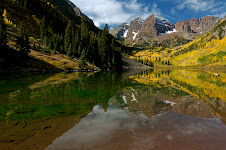For a look at what a new business model for the outdoor industry might look like, CEO Brief posed some questions to Mike Wallenfels, president of Mountain Hardwear and Chairman of the Outdoor Industry Association Board or Directors. Below are excerpts from his responses:
Q: How would you see vendors’ terms changing under a business model in which brands are breaking up business into four or five production runs and delivery periods throughout the year? A: There would be three tiers under what retailers would buy from. Continuous replenishment of year-round product that would carry 30-day terms at set prices providing reliable margin to the retailer, these transactions are not driven by discounts and dating. For seasonal product sold twice a year, we should operate on a moderate discount range with extended dating offered for appropriate categories such as ski apparel and equipment and offer the ability to reorder. For seasonal collections, I see higher discounts as an incentive for four or more product offerings a year that would liquidate after 60 to 90 days in store.
Q: How do you envision this affecting the brands’ and/or retailers’ ability to chase business when a popular style emerges? A: For 12-month and seasonal products there is no change and meeting demand should still be expected. For the 4x product assortments, this is truly collection selling and a rapid sell out is a win for everyone and any reorder would be unplanned. A wholesale brand could decide to offer a key mover again the next season or year. Hopefully we keep coming up with new winners each time. Again, this is the exception and not the rule.
Q: How would the hard goods business fit into this new model? A: Equipment should fit into the replenishment model with retailers picking their styles in the spring for camping and climbing gear. Initial orders are shipped with retailers supplying projections of sales with B2B systems used to keep product in stock. Wholesale brands benefit here when they get to see in season sell-through on their products and retailers manage lower inventories with faster turns. However, this does not work if there is not a mechanism in place to make it happen. Currently we rely on large shipments two times per year with reorder in between orders to stock retailers. Wholesale brands are willing to invest in the appropriate systems if the retailers can get up to speed.
Q: Why not just bring more apparel and/or footwear production back home to reduce lead times? A: The factory base in casual and performance apparel is NOT here. We can make T-shirts and smaller runs of knit products, but stylized apparel, rainwear, and technical equipment are out of the question. If there were factories available, we would have a rude awakening to the prices that we would see compared to Asia. I do believe that there will be growth in domestic production as time goes on, but it will take some time, investment, customs changes and price acceptance.
Q: Why change the model for a temporary financial crisis? Won't things just go back to normal when the financial crisis ends? A: Banks and brands will all require assurances that these issues cannot happen again. Currently, the retailer can cancel any product at any time, but the wholesaler cannot. This leaves a large amount of inventory that still has yet to find a home in 2009. Good business practice will show that we need to change on some level. I also believe what many say will be a lasting change in consumer buying habits. How extensive it will be is yet to be seen, but caution will be the rule in the supply chain going forward.
Thursday, May 7, 2009
Subscribe to:
Post Comments (Atom)



No comments:
Post a Comment